 W
WThe Renaissance in Scotland was a cultural, intellectual and artistic movement in Scotland, from the late fifteenth century to the beginning of the seventeenth century. It is associated with the pan-European Renaissance that is usually regarded as beginning in Italy in the late fourteenth century and reaching northern Europe as a Northern Renaissance in the fifteenth century. It involved an attempt to revive the principles of the classical era, including humanism, a spirit of scholarly enquiry, scepticism, and concepts of balance and proportion. Since the twentieth century, the uniqueness and unity of the Renaissance has been challenged by historians, but significant changes in Scotland can be seen to have taken place in education, intellectual life, literature, art, architecture, music, science and politics.
 W
WBeggars' badges were badges and other identifying insignia worn by beggars beginning in the early fifteenth century in Great Britain and Ireland. They served two purposes; to identify individual beggars, and to allow beggars to move freely from place to place.
 W
WClan Douglas is an ancient clan or noble house from the Scottish Lowlands.
 W
WThe Buke of the Howlat, often referred to simply as The Howlat, is a humorous 15th century Scots poem by Richard Holland.
 W
WThe Collegiate Church of St Mary, Dumbarton, Scotland, was founded in about 1453 by Isabella, Countess of Lennox and Duchess of Albany. During the medieval period, collegiate churches took on the responsibility of caring for the sick and elderly within their parishes. St Mary's met these needs in a hospital attached to the main church building, and a separate leper house located at a "safe" distance from the town centre. The church ceased to exist at some time during the Scottish Reformation of the mid-sixteenth century.
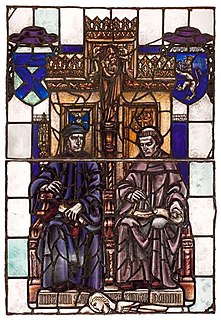 W
WCanon Alexander Galloway was a 16th-century cleric from Aberdeen in Scotland. He was not only a Canon of St Machar’s Cathedral, he was a Royal Notary and Diocesan Clerk for James IV and James V of Scotland; vicar of the Parishes of Fordyce, Bothelny and Kinkell (1516-1552); five times Rector of King's College – University of Aberdeen; Master of Works on the Bridge of Dee in Aberdeen and for Greyfriars Church in Aberdeen; and Chancellor of the Diocese of Aberdeen. According to Steven Holmes, he was one of the most notable liturgists of his time, designing many fine examples of Sacrament Houses across the North-East of Scotland. He was a friend of and adviser to Hector Boece, the first Principal of the University of Aberdeen, as well as Bishop Elphinstone, Chancellor of Scotland and Gavin Dunbar. He was an avid anti-Reformationist being a friend of Jacobus Latomus and Desiderius Erasmus Roterodamus and clerics in the Old University of Leuven. Along with Gavin Dunbar, Galloway designed and had built the western towers of the cathedral and designed the heraldic ceiling, featuring 48 coats of arms in three rows of sixteen. More than anyone else he contributed to the development of the artistry of Scottish lettering. He has a claim to be what some might call "a Renaissance Man".
 W
WThe Lamont Harp, or Clàrsach Lumanach is a Scottish Clarsach currently displayed in the National Museum of Scotland. It is believed to date back to the 15th century, and to have originated in Argyll. Along with the Queen Mary Harp and the Trinity College harp, it is one of the only three surviving medieval Gaelic harps.
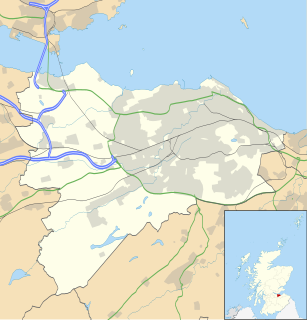 W
WLennox Tower is a ruined fifteenth-century tower house at Lymphoy, near the Water of Leith, between Balerno and Currie, 11 kilometres (6.8 mi) southwest of Edinburgh, Scotland.
 W
WSt. Lesmo of Glen Tanar is the name given to a holy hermit who it is believed lived in Glen Tanar Aberdeenshire Scotland in the eighth century. He is recorded by Thomas Dempster as a "saint" in the seventeenth century. His claimed Saints’ Day is the 9 December.
 W
WThe Maitland Manuscripts are an important source for the Scots literature of the Fifteenth and Sixteenth Centuries. They contain texts of the work of the makars of the period and much material which is not attributed to any author.
 W
WMilton Tower is a ruined castle in Keith, Moray in Scotland. Built and remodelled over several centuries, it was started around 1480 for George Ogilvie, and served as a seat of the Ogilvies, who had succeeded the Abbots of Kinloss as the feuars of the district after the Scottish Reformation. Renovated by Margaret Ogilvie in 1601, the tower passed by marriage into the Oliphant family in 1707, but was neglected and gradually fell into disrepair after 1715. It was finally abandoned in 1829, and much of the stone that made up the fabric of the building was removed for use elsewhere.
 W
WThe Queen Mary Harp or Lude Harp, is a Scottish clarsach currently displayed in the National Museum of Scotland. It is believed to date back to the 15th century, and to have originated in Argyll, in South West Scotland. It is one of the three oldest surviving Gaelic harps, the others being the Lamont Harp and the Trinity College Harp.
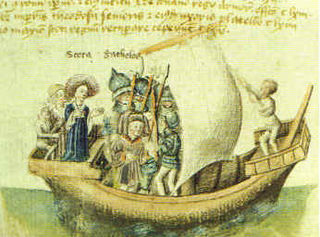 W
WThe Scotichronicon is a 15th-century chronicle or legendary account, by the Scottish historian Walter Bower. It is a continuation of historian-priest John of Fordun's earlier work Chronica Gentis Scotorum beginning with the founding of Ireland and thereby Scotland by Scota with Goídel Glas. Queen Scota's name means "blossom" in Irish and Scottish Gaelic. Scotti was once a synonym for Irish, indicating that they are "people of the blossom," or descendants of Queen Scota.
Scottish Marches was the term used for the Anglo-Scottish border during the late medieval and early modern eras, characterised by violence and cross-border raids. The Scottish Marches era came to an end during the first decade of the 17th century following the union of the crowns of England and Scotland.
 W
W"The Taill of the Uponlandis Mous and the Burges Mous", also known as "The Twa Mice," is a Middle Scots adaptation of Aesop's Fable The Town Mouse and the Country Mouse by the Scottish poet Robert Henryson. Written around the 1480s, it is the second poem in Henryson's collection called The Morall Fabillis of Esope the Phrygian.
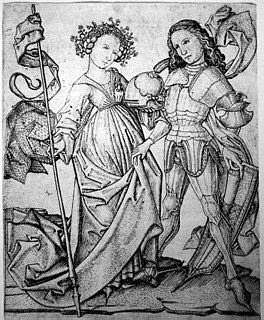 W
WThe Testament of Cresseid is a narrative poem of 616 lines in Middle Scots, written by the 15th-century Scottish makar Robert Henryson. It is his best known poem. It imagines a tragic fate for Cressida in the medieval story of Troilus and Criseyde which was left untold in Geoffrey Chaucer's version. Henryson's cogent psychological drama, in which he consciously resists and confronts the routine depiction of Cressida (Cresseid) as simply 'false', is one of the features that has given the poem enduring interest for modern readers and it is one of the most admired works of northern renaissance literature. A modern English translation by Seamus Heaney, which also included seven of Henryson's fables from The Morall Fabillis, was published in 2009.
 W
WThe Trinity Altarpiece, also known as the Trinity Altar Panels, is a set of four paintings in oil on wood thought to have been commissioned for the Trinity College Kirk in Edinburgh, Scotland, in the late fifteenth century.
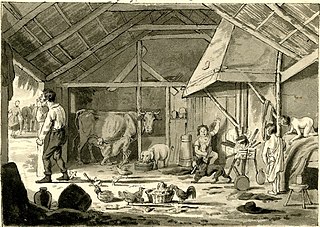 W
WThe Wife of Auchtermuchty is a Scots poem of the fifteenth or sixteenth centuries.